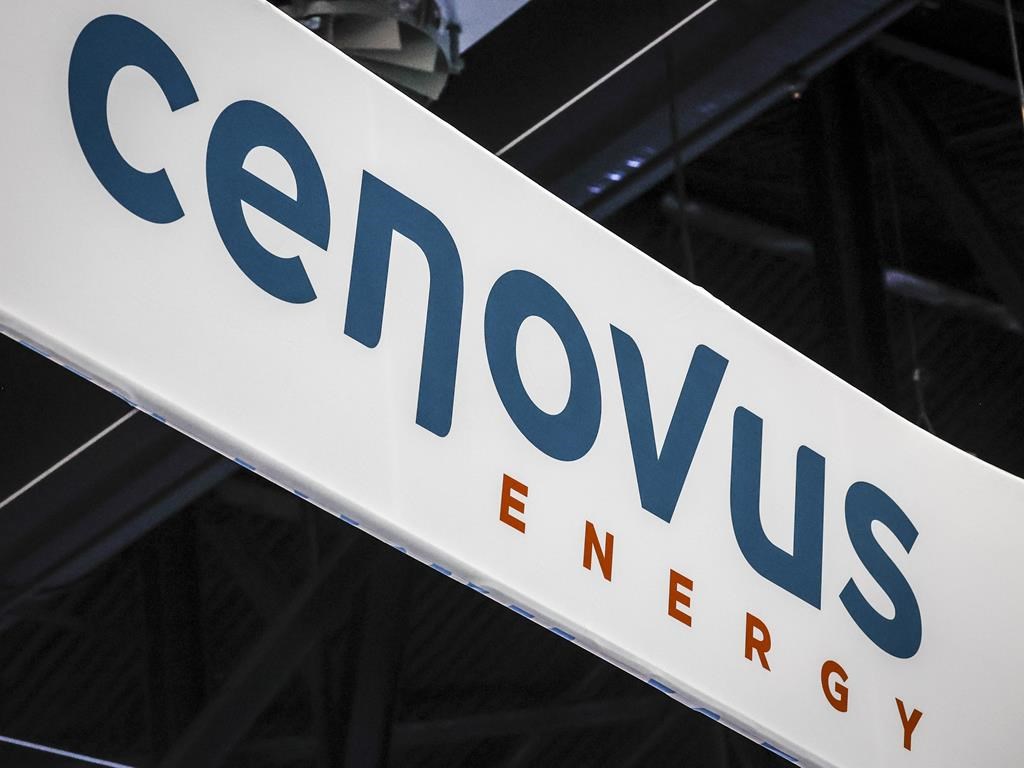Cenovus Energy Inc. will boost production in 2023 to meet what it believes will be continued strong global demand for oil in the year ahead.

The Calgary-based oil and gas company released its 2023 budget Tuesday, saying it anticipates capital spending of between $4.0 billion and $4.5 billion in 2023.
That amount includes spending of between $1.2 billion and $1.7 billion on optimization and growth, including construction of the West White Rose project off the coast of Newfoundland, as well as optimization of Cenovus’ oilsands assets and opportunities in its downstream business.
The company expects total upstream production of between 800,000 and 840,000 barrels of oil equivalent per day next year, a year-over-year increase of more than three per cent.
Its total downstream crude throughput is expected to increase nearly 28 per cent to between 610,000 and 660,000 barrels per day due to less planned turnaround work than in 2022.
Cenovus’ 2023 budget is based on a forecast average price for West Texas Intermediate crude oil of US$77 per barrel.
This is in spite of the fact that oil prices have fallen approximately 19 per cent in the past month, from more than US$90 per barrel in early November to just over US$74 as of mid-day Tuesday.

Much of that decline has been due to ongoing concerns about COVID-19 lockdowns in China and their potential impact on crude oil demand in that country.

Get breaking National news
But Cenovus chief executive Alex Pourbaix said in an interview Tuesday he believes the fundamentals of global oil demand will remain strong in 2023.
“There’s been a huge deficit in investment in upstream oil and gas over the past several years, and it’s going to take a period of time to replace that,” said Pourbaix.
“I think all things being equal, unless we have a really significant surprise in terms of recession or the return of the pandemic, that price that we’ve put out there (US$77) is kind of probably right down the fairway.”
Cenovus said its 2023 oilsands production is forecast between 582,000 and 642,000 barrels per day, while conventional oil production is expected between 125,000 and 140,000 barrels of oil equivalent per day, including about 570 million cubic feet per day of natural gas.
Total offshore oil production is expected to be in a range of 65,000 to 78,000 barrels of oil equivalent per day.
Cenovus said within the next five years, it plans to spend approximately $1 billion on greenhouse gas emissions reduction projects. These include carbon capture projects at its Minnedosa ethanol plant, Elmworth gas plant, Lloydminster upgrader and Christina Lake, as well as methane reduction initiatives across the company’s conventional operations.
Cenovus is also a member of the Pathways Alliance, a consortium of Canada’s largest oilsands companies which has pledged to achieve net-zero greenhouse gas emissions from oilsands operations by 2050.
The Pathways companies have jointly pledged to spend approximately $24 billion on emissions reduction projects before 2030. However, none of that pledged spending appears in Cenovus’ 2023 budget.
Pourbaix said the projects the Pathways group are proposing — in particular, a massive, proposed carbon capture and storage network that would sequester carbon from the oilsands and transport it to a central storage hub — are major pieces of infrastructure that take time to develop.
“We certainly don’t have our permits yet that we’re going to require from the provincial and potentially the federal governments. These larger scale projects just take a bit of time to get everything in place,” he said.
“I think what you’re going to see is … a relatively back-end-loaded investment as we get more toward the end of the decade.”
While the federal government has already committed to an investment tax credit that will support companies with the capital costs of building carbon capture and storage projects, Pathways member companies also want to see some government support for the ongoing costs of operating such projects.
Last week, political opponents and some business groups suggested Alberta Premier Danielle Smith could be getting in the way of industry goals with her proposed Alberta sovereignty act, which was recently unveiled in the provincial legislature.
These critics said the proposed act threatens to scare off investors and could make it more difficult for the province’s energy sector to work collaboratively with the federal government.
But Pourbaix said it’s too early to know exactly what the impact of the proposed legislation could be.
“I would just say as a general comment, in our industry, it really is important that the federal and provincial governments maintain a constructive working relationship to address any number of challenges. And the situation with net-zero aspirations would fit right in there,” he said.

“But it’s really hard to know at this point how exactly it might be used, or what its impact might be. To this point, I have not heard anything from investors who have indicated they’re worried about it. So we’ll just watch it and see how things go.”
Cenovus now expects to reach its net debt target of $4 billion by year-end 2022, at which point it will begin returning 100 per cent of excess free cash flow to shareholders.







Comments